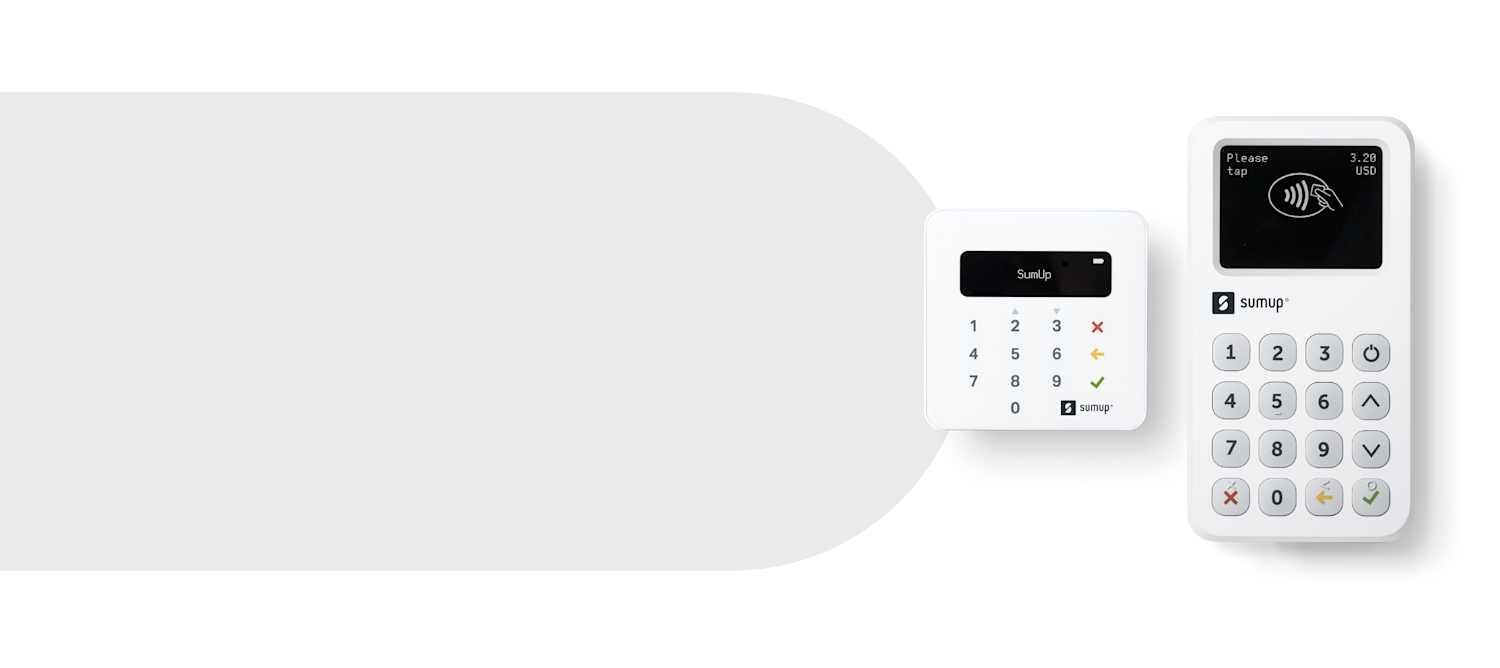How EMV Chip and PIN Technology Contributes to Security

In this article, you’ll learn:
What is EMV?
Innovative ways EMV protects your customers’ data
How to prevent chargebacks for card not present transactions
What is EMV?
EMV stands for Europay, MasterCard, and Visa, and has come to represent every credit card with a chip, even those issued by smaller companies. When customers pay with a chip, the card is inserted through a credit card reader, rather than swiped, and a signature is typically required to complete the purchase.
The first EMV chip card was issued in 2010 to give valued clientele an extra tier of security and create a globally accepted card. A year later, another 1.6 million users were given chip and PIN debit cards. When smaller issuers like JPMorgan, Chase, and U.S. Bancorp migrated to EMV, the momentum became unstoppable.
Your typical EMV card reader could cost between $500 and $1000, alongside additional monthly minimums and hidden fees. In comparison, SumUp Card Readers only charge a percentage for each transaction– a low 2.75%.
EMV is safer than ever
EMV Chip and PIN technology has been in use around the world since 2011. Globally in 2020, roughly 66.4% of credit cards were EMV chip based. Because the signature authentication process is far more accurate, including PIN verification to the transaction process adds yet another layer of protection against fraud. Simply put, EMV chips keep your buyers safe from breaches.
Today’s credit card security happens in layers, with each new layer adding an extra amount of security. If hackers get past the outer layer, they still have several more to pass through if they’re to reach the sensitive data in the center. However, EMV chip cards alone are not enough.
The data your reader accesses needs to be encrypted, something that the vast majority of mobile card readers don’t currently do. Your best defense of your clients’ privacy is only as powerful as your end-to-end encryption– a system that limits communication to the users who are interacting. End-to-end encryption helps defeat attempts to access the data on any software or credit card with a chip by keeping that information unreadable while it travels.
What is a card-not-present transaction?
Accepting remote payments can be a great way for your business to increase customer convenience and accept payments for services rendered – even when the cardholder is not present. A card-not-present (CNP) transaction is one that is conducted via the phone, internet, mail, or mobile device, where the physical card is not presented to the merchant.
In-person transactions are much easier to protect against fraud, thanks to the security developments of chip and pin technology. So when asking for remote payments, it’s essential to follow some best practices to ensure a good experience for your customers and protection for yourself against chargebacks.
What else can EMV do?
Credit card chip readers come with enough bells and whistles to be attractive to any retailer. They speed up your queues, simplify your point of sale, and even create records of your stock levels and bookkeeping data.
Contactless terminals are also far more compact than their predecessors, so they can be carried from door to door in the pocket. Your business can be as mobile as you wish– all your reader needs is a mobile Android or iOS device to support transactions.
You can now carry your point of sale anywhere and gain a new level of automation to support your human resources and accounting departments and with the right EMV partner, chip cards are your ticket to a profit boom.